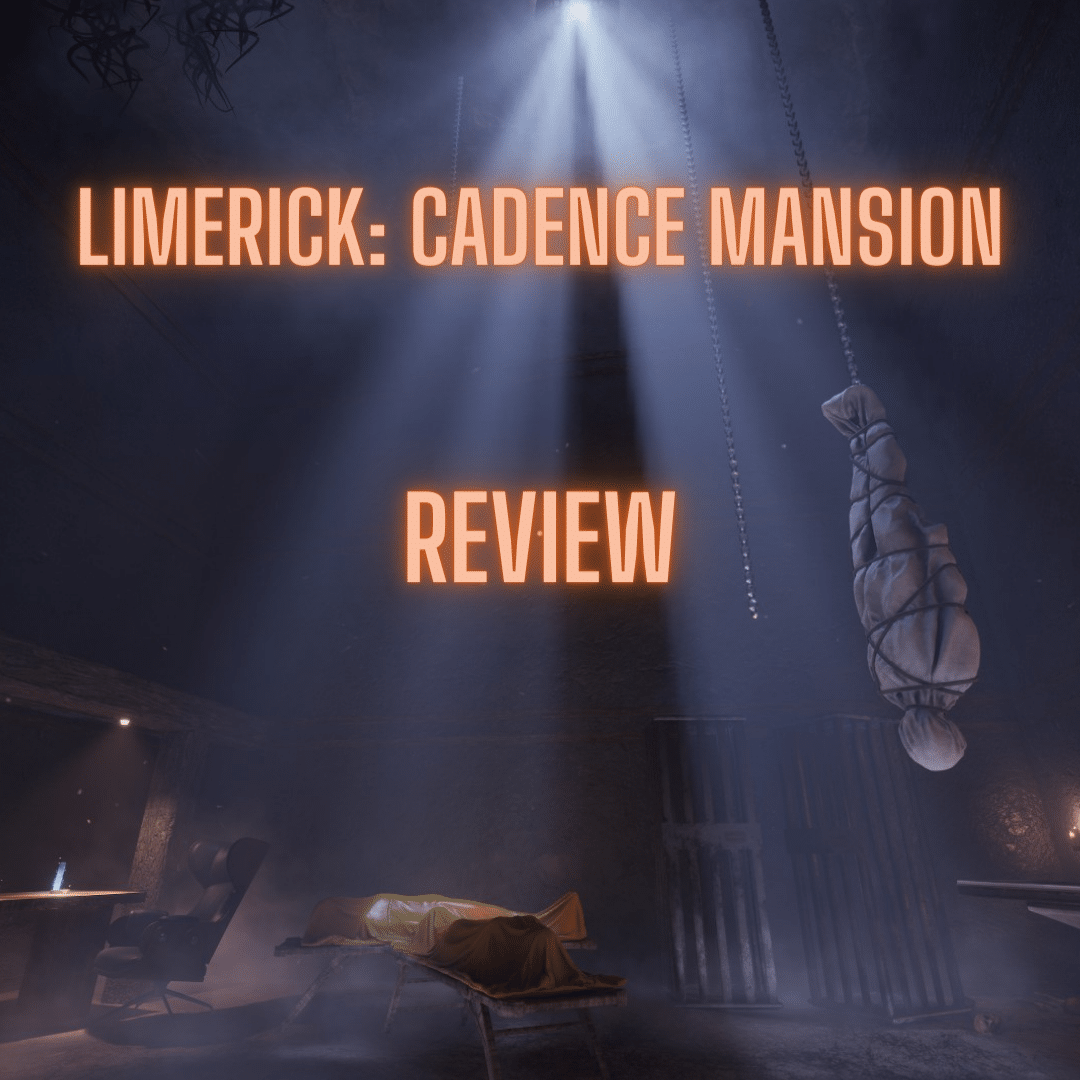Limerick Cadence Mansion opens as many indie horrors do–alone in a dark cell, with no recollection of how you got there and no other task in front of you than to escape. But Limerick quickly separates itself from the standard formula from there.
You’re quickly introduced to the lore, worldbuilding, and gameplay mechanics. Limerick goes well out of its way to show you that this is not a walking-simulator horror game, being quickly equipped with a spell that doubles as a tool to solve light environmental puzzles.
After that, you’re introduced to the save stations around the game. Limerick has an interesting mechanic where you must use resources scavenged in the environment in the form of mechanical parts, wiring kits, and allegory shards to power up the generator attached to the save station to use it.
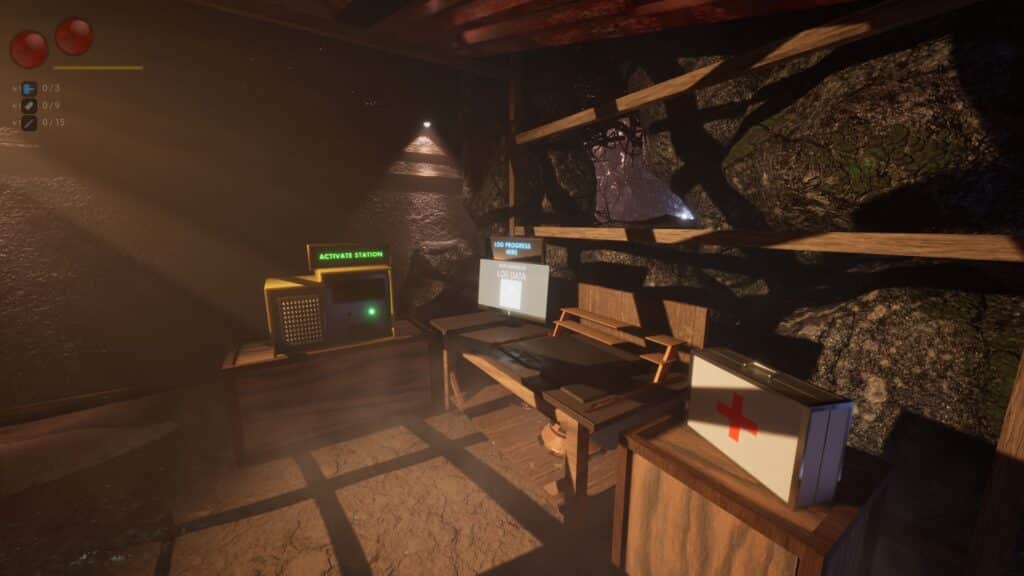
The materials are also used for upgrades to your arsenal. It’s a neat mechanic that illustrates that there’s a lot going on in Limerick Cadence Mansion, not just running from enemies and reading notes.
Oh, but there are notes to be read.
Another highlight of Limerick is the lore and story. You’re quickly introduced to various players in the story as you piece it together through notes and pretty great voiced dialogue! The audio quality and delivery of the lines are of a pretty surprisingly high quality. Always a nice surprise with Indies.
The narrative here is complex and entwined in a deep lore rooted in folklore and the power of the written word. There’s an ominous organization called the Splendor Point Poet’s Corporation, some immense power discovered deep underground and of course, monstrous creatures stalking the mansion you’re stuck in. There’s a big focus on storytelling here.
You learn of the Envoys. Men and women seemingly abducted and experimented upon by the Splendor Point Poet’s Corporation. You track their relationships and motivations via notes scattered around and ultimately discover their fates as you progress through the game. It’s a nice attention to detail as you can visualize these characters’ journey alongside your own.
It’s easy in games like these to throw lore and plot beats around through arbitrary notes and exposition, so it’s nice to see Limerick put a little more love into that department.
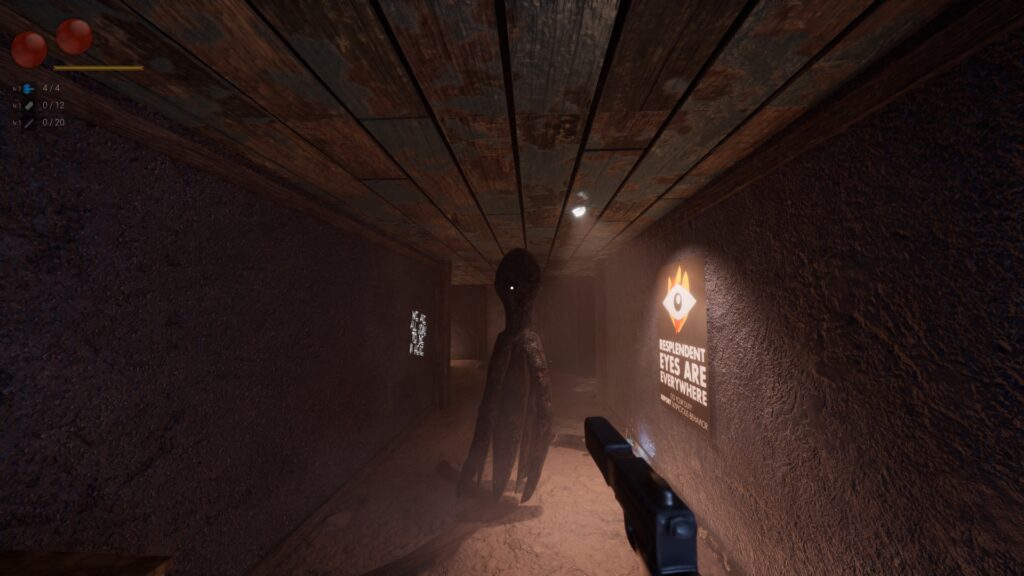
You uncover the Book of Anachronisms, which is a series of notes that goes out of the way to tell you it’s not relevant to uncovering the story but rather optional lore that fleshes out Limerick’s world. I’d have hoped for perhaps a little more spoken dialogue as opposed to written notes haphazardly thrown around, but that’s a conceit that often needs to be made.
But for as rich as the lore is, I never got a real sense of place in Limerick Cadence Mansion.
For more imaginative affairs like Limerick, I always hope the environments can also be a reflection of the creativity displayed in the lore and storytelling. There’s a lot going on with the visual design of the game. Twisting black roots jut out of nearly every surface, skulls and bones are stuck to the wall like coathangers, and you can’t walk ten feet without squinting at neon signage.
It all feels a little scattered. The environment feels dreamlike and cramped in a way that doesn’t evoke a true sense of place. The prison you wake up in doesn’t feel like the product of brutal science. The mansion that you enter later doesn’t feel as mysterious and enigmatic as something that belongs to an outfit called the Splendor Point Poets Corporation should.
A well-designed environment can be a character unto itself, and it would be been great to see more of the world be explained to you by what you explore, as opposed to what you read.
However, there’s one area further into the game called the Circus of Rage that feels perfect. But we’ll talk about that later.
But what of the gameplay? It’s a linear, resource management experience.
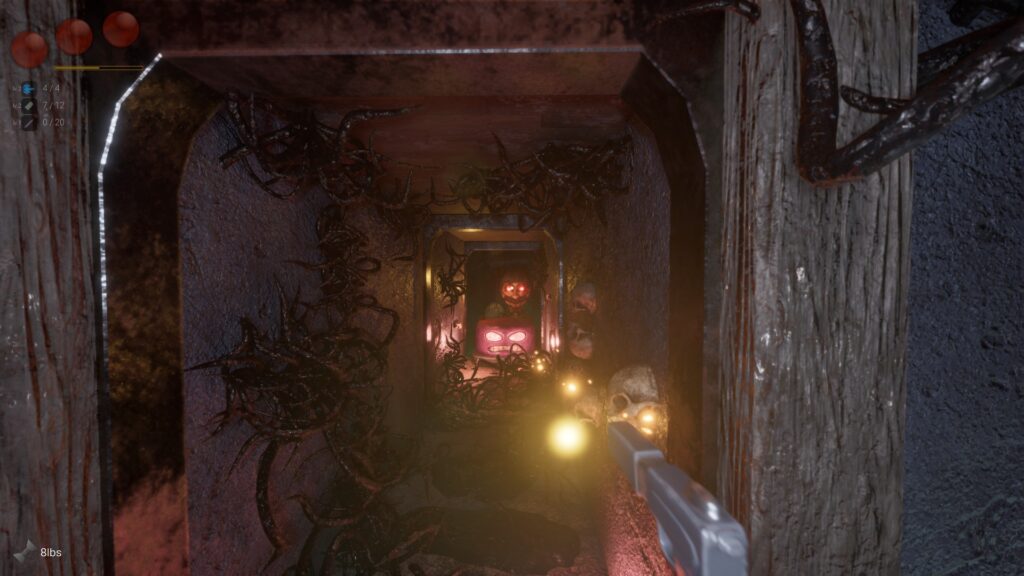
As the “Proofreader”, you explore the mansion while juggling health and ammo as you dispatch enemies in the forms of the Dissonance, a floating squid-like creature and some variants. The Cacophony, which functions more as a stealth-check as it patrols various areas, and Limerick himself, to name a few.
The gunplay is basic but serviceable, and elevated somewhat by the resource management aspect. You’re constantly expending ammo, scavenging, and restocking. Your max capacity for each weapon is no more than enough to dispatch one or two enemies, so you’re constantly switching between weapons.
The pace is pretty fast and Limerick doesn’t allow for much downtime. The item pickups are so brightly colored that you’re constantly pinging from one to the next, never really running out but rather constantly topping off and switching to whichever has more available.
I liked the pace. Coupled with the level design which often features narrow corridors and tight corners, it felt kinetic and engaging. Later on, as you attune further with Essence–a sort of magic reserve that allows for special abilities–you’ll learn how to dash around.
The dash is a great tool and comes in handy during the few open arena fights that feature several pursuing monsters as well as projectiles. At its best, it evokes feelings of a bullet hell game and you’re given just enough resources to manage that it keeps you on your toes. Good stuff.
All this comes together in the main boss fights within Limerick Cadence Mansion.
These are larger affairs with some pretty impressive scale and animations. The encounters demand full use of your suite of abilities as you dodge the boss’s attacks and small mobs alike. The music that accompanies these is equally impressive, which leads to memorable moments where the combat and movement come together beautifully.
And then there are puzzles!
Limerick Cadence Mansion LOVES puzzles.
There are just so many. You can’t play for two minutes without hitting a puzzle.
You’ve got code puzzles, door puzzles, power puzzles, stacking puzzles, sentence-building puzzles, math puzzles, memory puzzles, weight-balancing puzzles, and more!
This is not a bad thing! Most are fairly light, which helps with the sheer number of them you encounter. Rarely do these puzzles require you to explore outside of the immediate area to solve, and after an initial head scratch, are solved quickly in a minute or two.
It works in the same way the combat does. You move quickly in Limerick, never stopping too long at one place. The puzzles are these nice little gear-shift moments. If you’re not into puzzles, Limerick Cadence Mansion is not for you. If you’re so/so on puzzles, you might think there are too many. But I think it’s a strength, and further differentiates itself from standard indie horror fare.
There’s a particular math puzzle later in the game where you must balance the numerical value of two fuses to a central number or else the whole thing will explode that was a particular highlight. There’s been a lot of love put into these puzzles, with nearly none of them repeating, or feeling tiresome to interact with.
Still, there is an option to bypass these puzzles depending on your difficulty level with a simple throw of a lever that’s found nearby.
But there is one area that I think Limerick Cadence Mansion combines the combat and the puzzles perfectly, and that’s the Circus of Rage
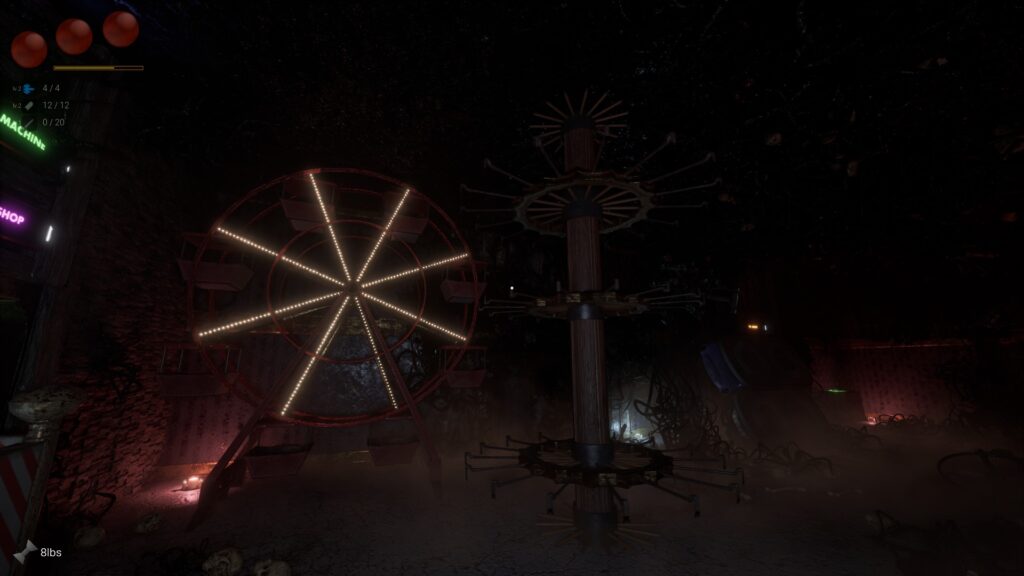
The Circus of Rage is an awesome challenge room that pits you in a small, dark carnival maze with the game’s chief antagonist, Limerick himself. This nasty little marionette will either float around or seemingly randomly hop into an evil little car and relentlessly pursue you.
Not so bad, you might think, but you’re also tasked with solving three different puzzles while dodging Limerick. With no checkpoints in between puzzles, it’s rough.
It creates incredibly tense moments as you’re nearly finished with a puzzle when you hear the soft clattering of wooden limbs approach from the darkness. Do you double down and try to finish? Or do you break away and hope you can find your way back and pick up where you left off?
Should you be seen by Limerick, your only choice is to hide in various safety closets that need to be powered up. This is one aspect that slows down the pacing a little too far, as you must swap batteries, mash buttons to charge, and swap again in order to safely hide.
While juggling the puzzles under pressure by Limerick is one thing, this felt more tedious and contributed to more lost runs than anything else. It detracts a little from arguably the game’s best scenarios and may be too punishing for some.
Still, the Circus of Rage is a highlight of the experience and was a joy to get through.
Overall, there is a lot to like about Limerick Cadence Mansion.
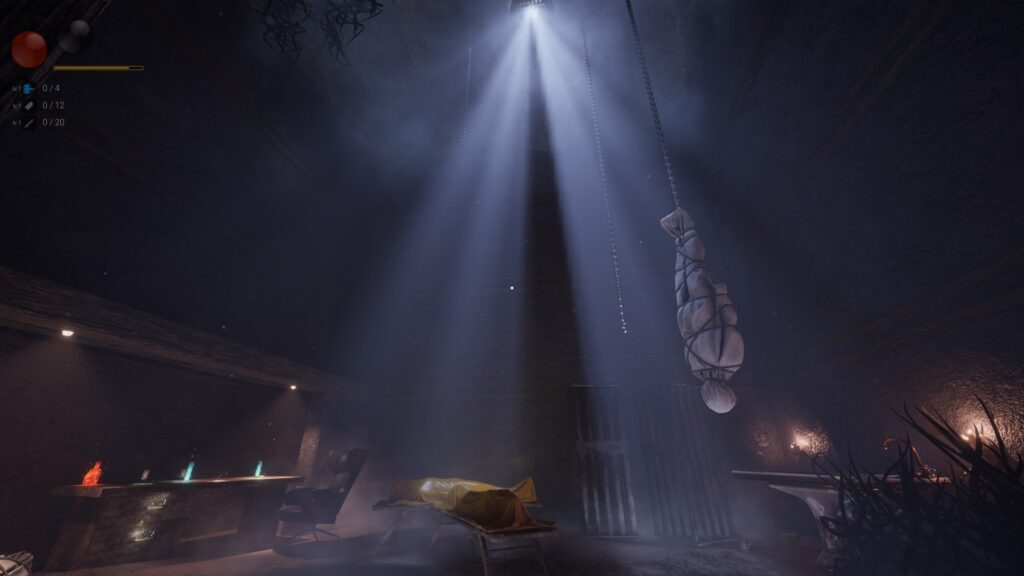
You can feel the love poured in here over the four years of development. The world is surprisingly complex and the lore is meticulously developed.
The level and environment design take away from that worldbuilding a little, but it’s made up for in the tight gameplay that always keeps you moving. The weapons are fun to use, and the new ability unlocks keep things fresh.
The sheer amount of puzzling in the game could be a turn-off to some or a highlight for others. Regardless, the design and depth of the puzzles feel tuned just right for the length of the game, never taking more than a few moments to work through.
I recommend Limerick Cadence Mansion to any adventure fan looking for a weird world, fun combat, and many, many puzzles.
If you’re looking for other Indie horror games to sink your teeth into, check out the 5 Best Puppet Combo Games Ranked, or the 5 Bet Chilla’s Art Games Ranked
